Garcinia intermedia
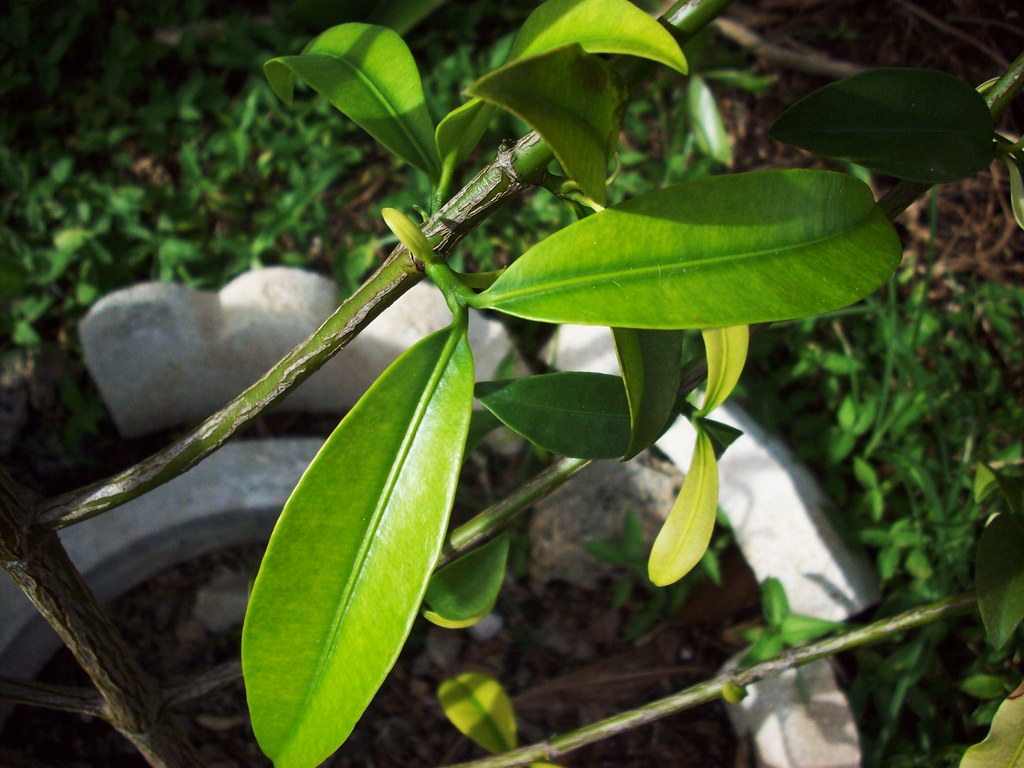
 first two photos are of my G. intermedia seedling
first two photos are of my G. intermedia seedling
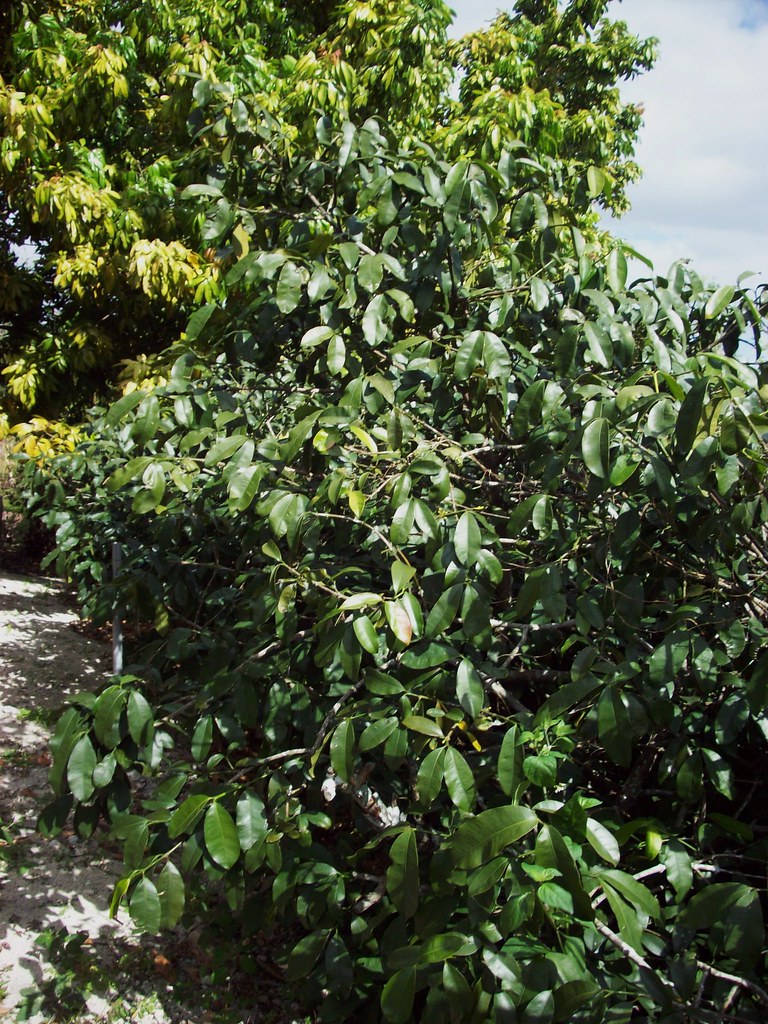 large shrub-like specimen G. intermedia @ the RFVC 208 garden
large shrub-like specimen G. intermedia @ the RFVC 208 garden
 female? (not a 100% on this) flowers of G. intermedia @ the RFVC 208 garden
female? (not a 100% on this) flowers of G. intermedia @ the RFVC 208 garden
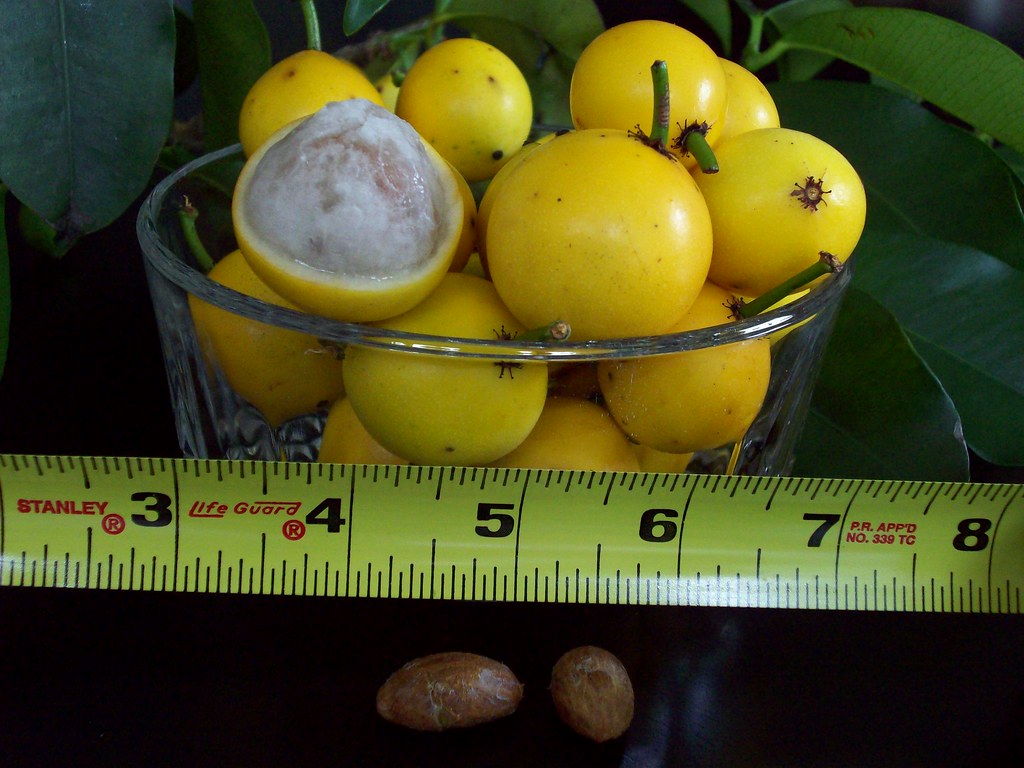
G. intermedia fruits, seeds & leaves.
Family: Clusiaceae •
Genus: Garcinia •
Species: intermedia (Pittier)Hammel •
Country of Origin: Central & South America •
Synonyms: Rheedia edulis •
Common Names: Lemon Drop Mangosteen, Mameyito •
I transplanted this last year and it has struggled every since. I feel terrible, it looks like Charlie Brown's Christmas tree! It also had a magnesium deficiency which I've since taken care of. You can see the deeper green coming back. This fruit reminds me of a childhood favorite Lemonhead™ candy. I can't wait till it fruits. It could be a while because it is not happy with me!
Update 2-16-2009 I have three more seedlings growing now!!!
The elegant, erect tree, ranging up to 100' (note from Eric: I'm not sure the ultimate height for this tree is correct as information varies, the one at the RFVC 208 garden is barely 10' high, so for now I'll stick with J. Morton, but I'd venture to say it is more like 20' or 30' high ultimately) has copious gummy, yellow latex and opposite, short-petioled, thick, leathery, elliptic-oblong or elliptic-lanceolate leaves, 3 3/16" to 6" long, 3/4" to 2" wide, or much larger, with numerous lateral veins conspicuous on both surfaces; dark-green above, pale or brownish on the underside. Young foliage is reddish. The small, greenish-white or ivory flowers, densely clustered below the leaves, are 4-petalled, the male with 25 to 30 stamens, the perfect with 10 to 12.
The fruit is oval or oblong, 3/4" to 1 1/4" long, smooth, orange or yellow, the thin, soft skin easily peeled. There is a little flesh, sweet or acid, adhering to the 1 or 2 seeds.
excerpt from http://www.hort.purdue.edu/newcrop/morton/bakupari_ars.html
Garcinia livingstonei
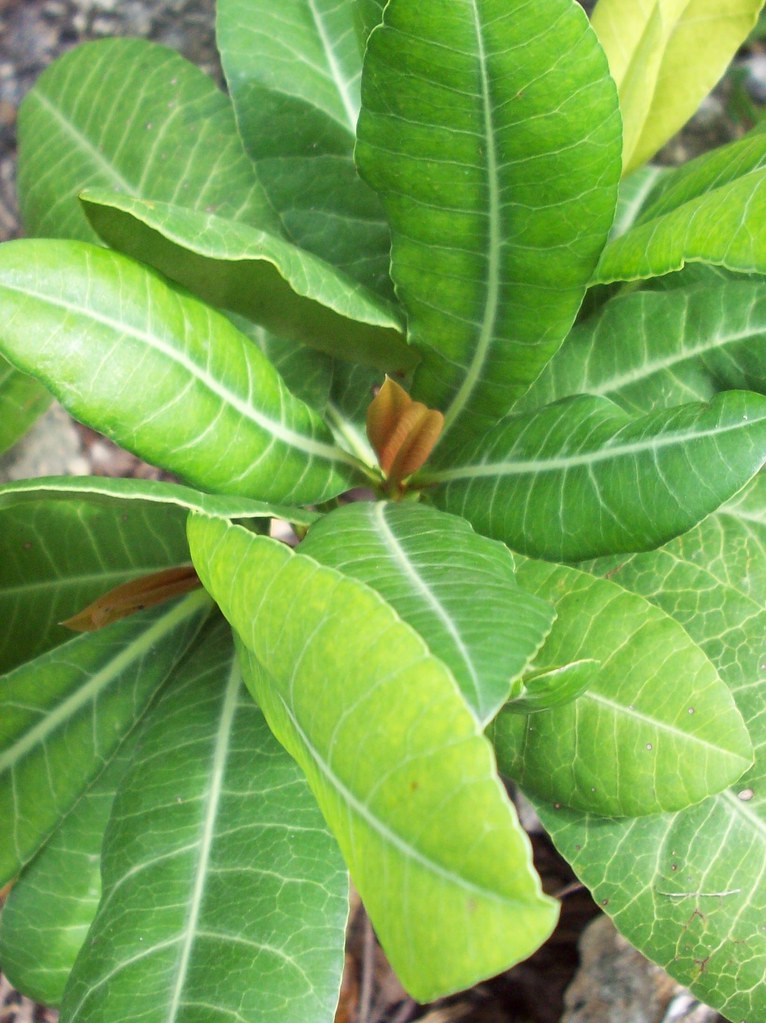
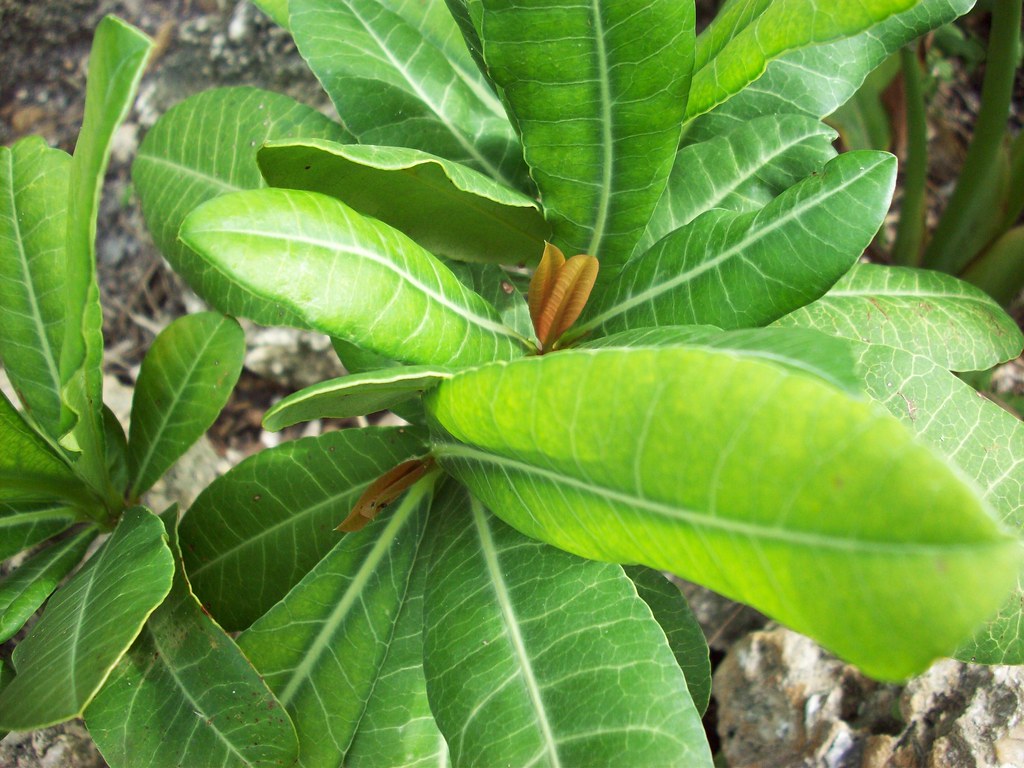
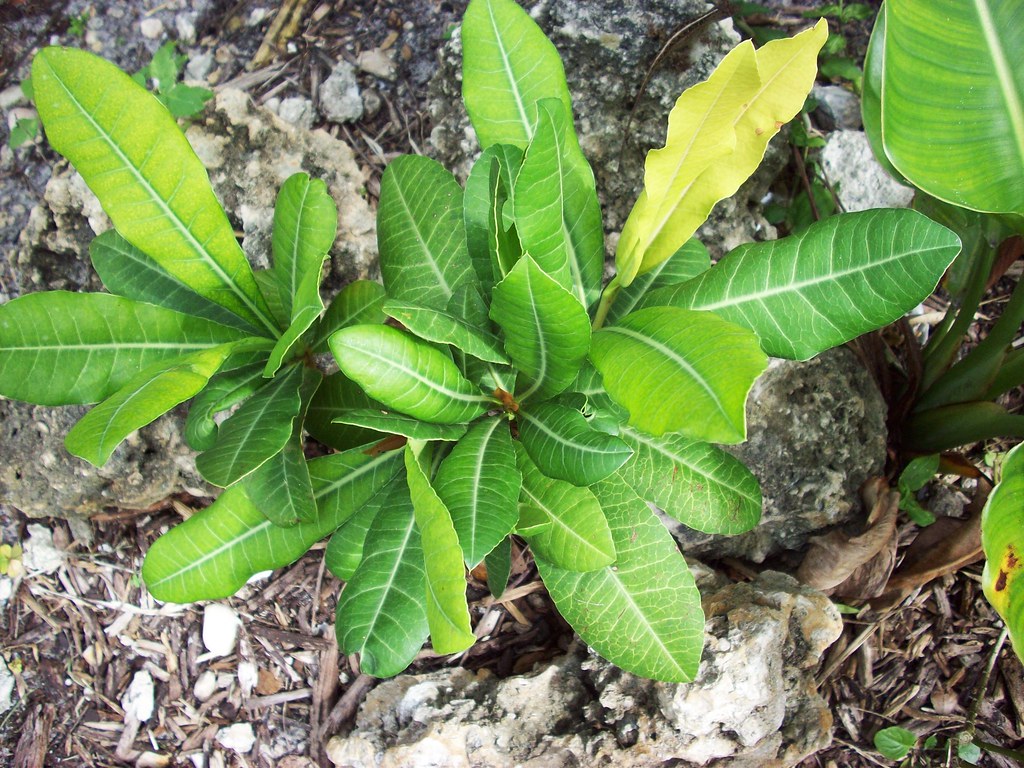 first three photos are of my G. livingstonei seedlings
first three photos are of my G. livingstonei seedlings
 female flowers of G. livingstonei @ the RFVC 208 garden
female flowers of G. livingstonei @ the RFVC 208 garden
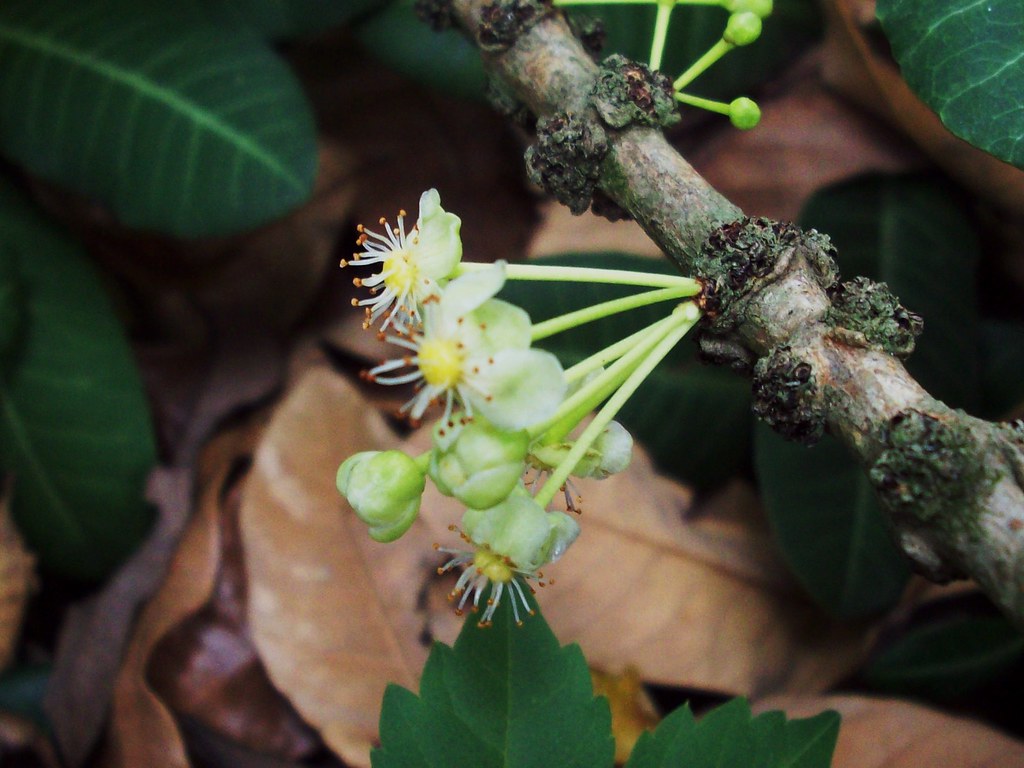 male flowers of G. livingstonei @ the RFVC 208 garden
male flowers of G. livingstonei @ the RFVC 208 garden
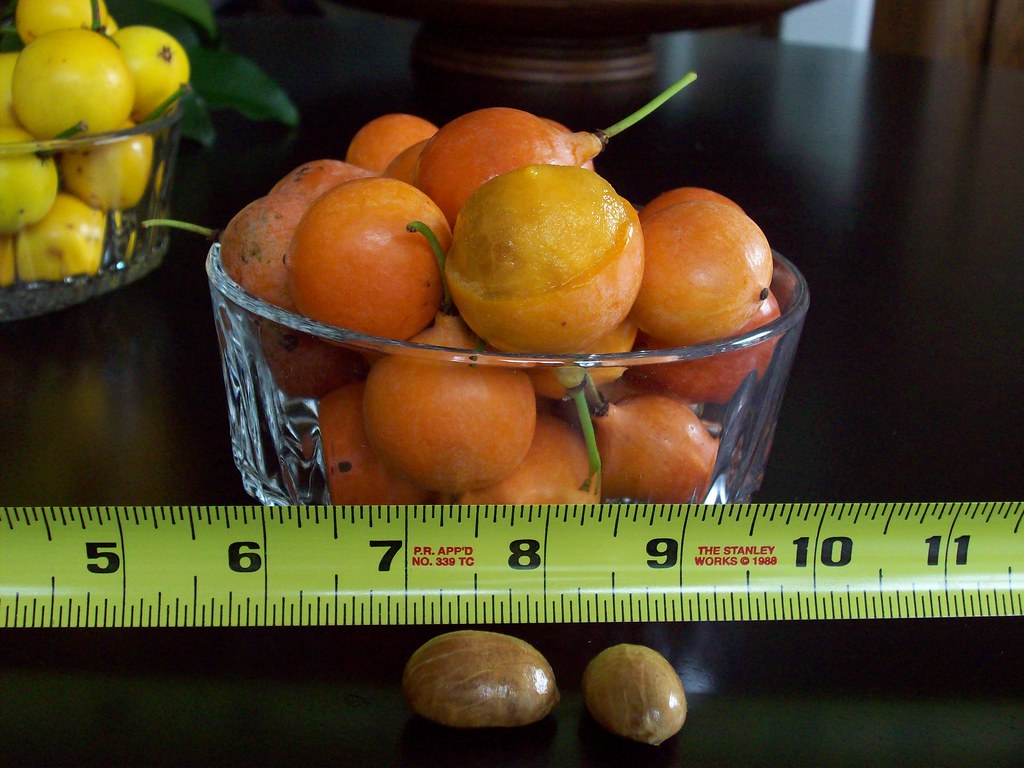 G. livingstonei fruits & seeds
G. livingstonei fruits & seeds
Family: Clusiaceae •
Genus: Garcinia •
Species: livingstonei (T. Anderson) •
Country of Origin: Africa •
Synonyms: •
Common Names: Imbe, African Mangosteen •
All these Garcinia spp. are grown from seeds. They start off real slowwwwwwwwww, but they're growing good now. Another tasty Garcinia sp. Definitely has a lemony flavor like most of these species described here.
Even without their fruits, these highly ornamental trees are good to have around. Seen in profile, they frequently divide near the ground into three or four upright, outward-curving trunks that carry short, stiff, lateral branches. They can reach 30' in height, but are normally much less. The new shoots grow in whorls (verticils) of three and emerge at an acute angle from the stem, giving the tree its characteristic asymmetry and crooked form.(1) Leaves usually 3 in a whorl (may be 4 or opposite), variable in shape but usually egg- or lance-shaped, generally 2 1/2"–4 1/2" × 1 1/4"–2 1/4" , blue-green with whitish veins, waxy. Flowers in groups of 5–15 in leaf axils on old wood, greenish, whitish or yellow, scented, male and bisexual flowers of different structure.(2)
The fruit looks like a small plum: orange in color and round or ovoid in shape but it has a point at the bottom, 3/4" to 1 1/4" long and about the same in diameter. The skin—thin, smooth, glossy, and leathery tough—separates easily from the flesh. The pulp itself is yellow and watery, with a pleasing flavor—sweet, and not unlike a perfect peach. In the center are one or two seeds which, unlike its relatives, are not reported as eaten.(1)
A traditional food plant in Africa, this little-known fruit has potential to improve nutrition, boost food security, foster rural development and support sustainable land care. It is mainly grown as an ornamental fruit, but is sometimes eaten. The juice is known for staining very badly. Mostly eaten fresh, it is also used in drinks. It can be grown in southern Florida. Both a male and female plant are needed in order to obtain fruit, although both sexes can be grafted onto the same plant to achieve the same effect.(3)
excerpts from
(1)Lost Crops of Africa Volume III
(2)http://www.plantzafrica.com/plantefg/garcinliving.htm
(3)http://en.wikipedia.org/wiki/Garcinia_livingstonei
Garcinia madruno
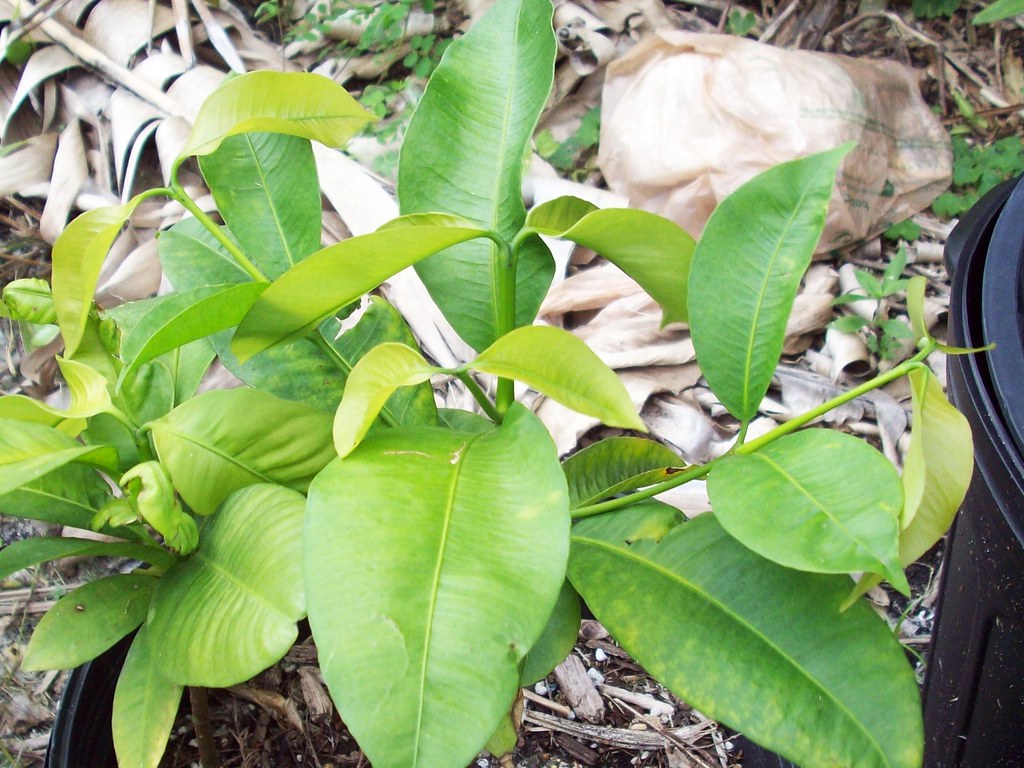
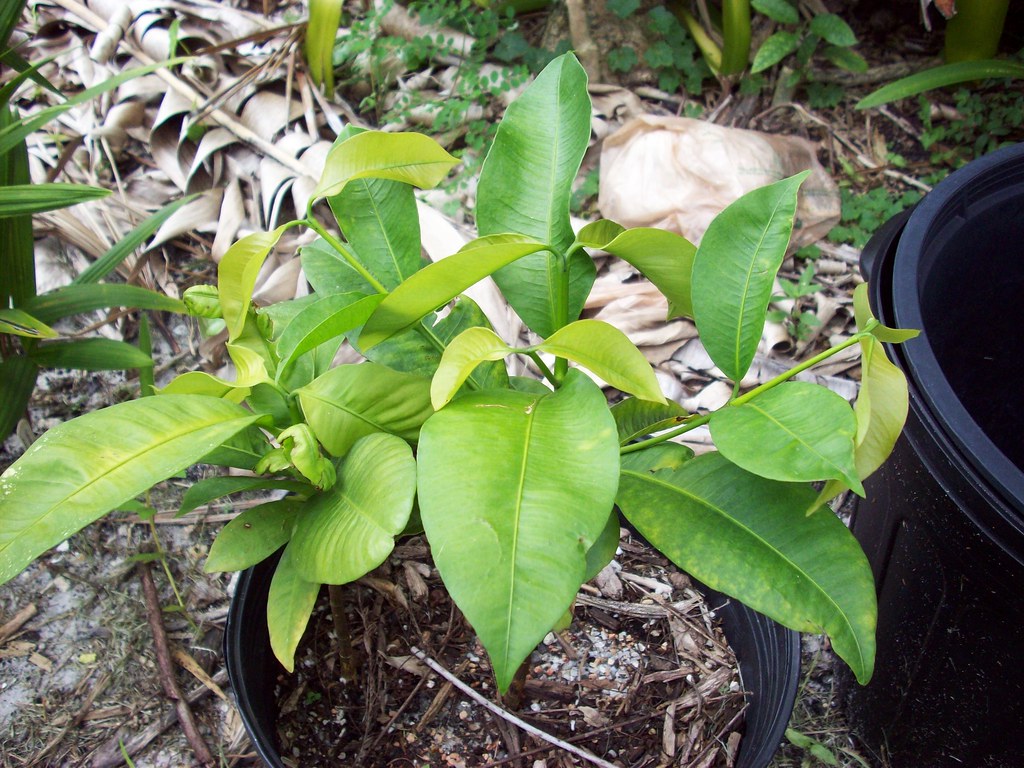
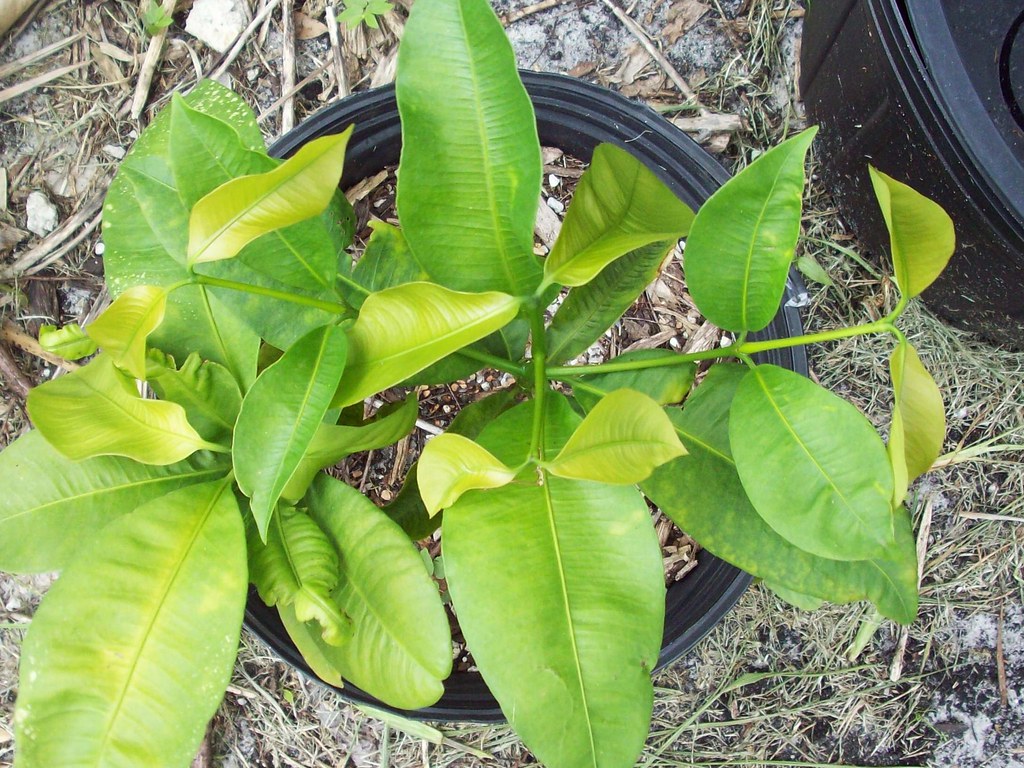 first three photos are of my small G. madruno seedlings
first three photos are of my small G. madruno seedlings

 last two photos G. madruno fruits © Copyright Smithsonian Tropical Research Institute 2003-2006
last two photos G. madruno fruits © Copyright Smithsonian Tropical Research Institute 2003-2006
Family: Clusiaceae •
Genus: Garcinia •
Species: madruno (Planch. & Triana) •
Country of Origin: Costa Rica, Peru •
Synonyms: Rheedia acuminata, Rheedia madruno •
Common Names: Charichuela, Madroño •
I got these seeds from Bill Whitman before he passed away. "Mr. Whitman was a founder of the Rare Fruit Council International, based in Miami, and was its first president, from 1955 to 1960. "(1) His legacy lives on with these plants and I'm sure hundreds of others. They started slow but they're taking off this year. This fruit tastes like lemony cotton-candy. It's possibly the best fruit I've ever tasted. I can't wait for it to fruit!!!!
The tree is erect, lush, compact, with pyramidal or nearly round crown, 20' to 65' high, and has much gummy yellow latex. The opposite leaves are elliptic to oblong, wedge-shaped at the base, rounded or pointed at the apex, 2 3/8" to 8" long, 3/4" to 3" wide; dark green above, paler beneath, with numerous veins conspicuous on both surfaces and merging into a thick marginal vein. The fragrant male and female flowers are borne on separate trees in clusters of up to 14 in the leaf axils; have 4 re-flexed, pale-yellow petals; the male, 25 to 30 light-yellow stamens.
The fruit is round or ellipsoidal, sometimes with a prominent nipple at each end; 2" to 3" in long, with thick, leathery, warty, greenish-yellow rind containing a deep-yellow, resinous latex. The white, translucent, juicy, sweet-acid, aromatic pulp adheres tightly to the 1 to 3 ovate or oblong seeds which are about 3/4" in long.(2)
excerpts from
(1)http://www.nytimes.com/2007/06/04/us/04whitman.html
(2)http://www.hort.purdue.edu/newcrop/morton/bakupari_ars.html
My friend Chris Hind has some great photos of Garcinia spp. at his site here
Lets figure out the Garcinia's
last updated on 05-31-2009

Garcinia spp. by Eric Bronson is licensed under a Creative Commons Attribution-Noncommercial-No Derivative Works 3.0 United States License.
Based on a work at www.flickr.com
Wednesday, June 30, 2010
Garcinia spp.
Posted by Eric Bronson at 8:00 AM
Labels: clusiaceae, tropical fruits
Subscribe to:
Post Comments (Atom)

0 comments:
Post a Comment